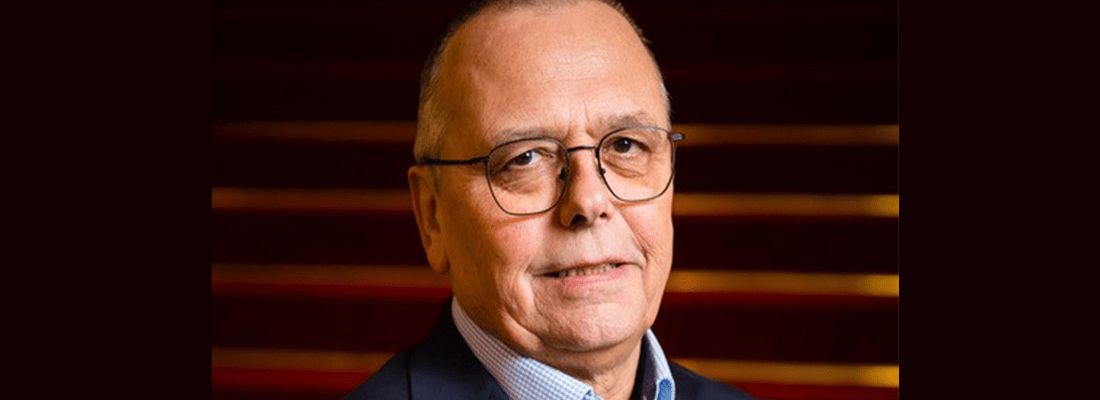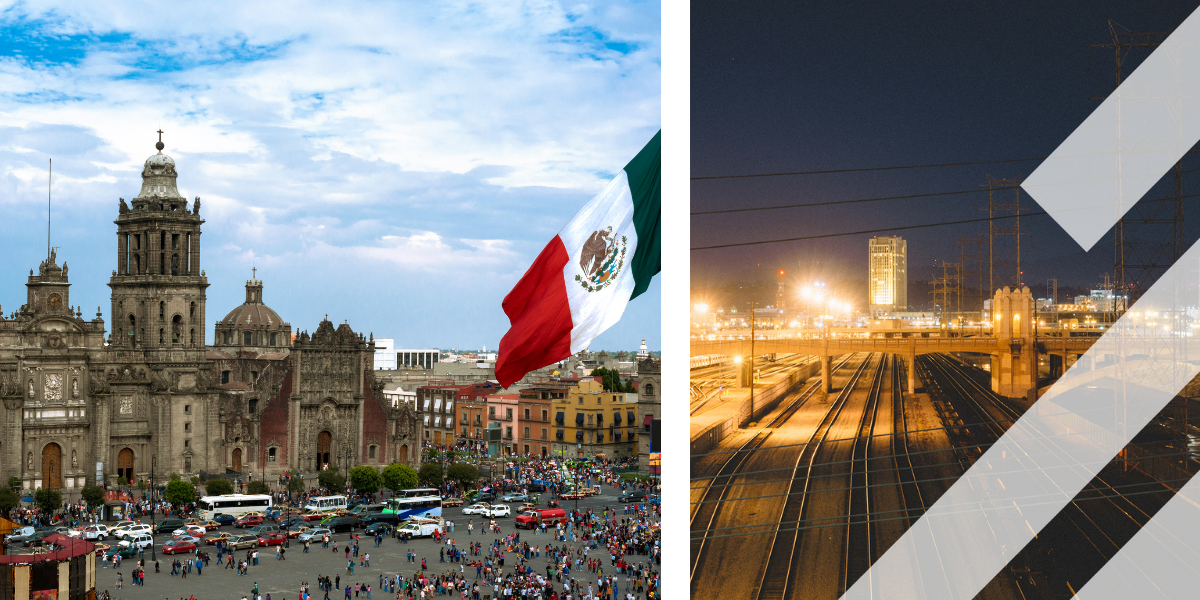Speeding up the mobility transition: Pedro Peters, OV-NL
‘For the first time in years both public transport and road transport cooperate as one mobility team.’
With the continuous growth of the population and ongoing urbanization there are numerous mobility challenges. Sustainability, safety and societal impact are amongst our daily concerns. We need to speed up the mobility transition to keep up with the fast changing global dynamics, which requires inventive approaches and better solutions. In this series we share inspiring and innovative cases from all over the world. Pedro Peters is chairman of OV-NL, the Dutch association for public transport and shares what impact the organisation has had so far in the mobility industry. How did he speed up the mobility transition?
Pedro Peters started a mission years ago: he wanted to improve the cooperation between public transport organisations and companies. To him the only way to improve the quality of our traffic infrastructure. A necessity since on an average working day 1.3 million people travelled by train and even more by bus, tram and metro before the outbreak of the Coronavirus. And capacity wasn’t endless.
‘OV-NL became a government sparring partner and voice of the industry.’
‘I have been working in public transport for quite a long time. I started at a public transport company in Utrecht and after that I worked for the local public transport company in the region of Rotterdam. About four years ago while I was working in Rotterdam, I was asked to be the first chairman of OV-NL, the new Dutch association for public transport. At the time, the position of chair was supposed to be rotating to make sure every interest of every organisation was looked after.’
‘However, as soon as I retired, I was asked to become the part-time independent chair of OV-NL. I was excited to start a new challenge and set two main goals: first an improvement of the cooperation between the public transport organisations in order to improve our public transport system. Secondly, to make our public transport a bigger and more important contribution to mobility and more sustainable, to work towards a zero-emission transport system. The association has nine CEO’s as members representing all the national public transport organisations and I am supporting them. Since we now have a voice as one industry, I am OV-NL’s spokesman in public and government settings and lobby internationally via the UITP.’
‘My new job started with a discussion about the student discount card. Our Ministry of Education was subsidising public transport travel for students with 800 million euro in order to let them travel by public transport for free, in and outside rush hours. A great way to promote higher education for every potential in our country. The government wanted to cut that budget. Since this involved the entire public transportation sector, everyone had the urge to work together on this and the role of OV-NL became most important. OV-NL became a sparring partner of the government for the first time ad we succeeded in the lobby.’
‘For the very first time in Dutch history there was a cooperation between both public transport and road transport sector.’
‘The next big project was initiated quite soon after this and involved our goals in mobility. In 2016 the Paris Agreement asked for action to reduce emission. Three years ago the Mobility Alliance was founded: mobility needs to become smarter, greener, safer and more flexible. The main and common goal for public transport was, and still is, to improve mobility and to have zero emission by 2025. This involves mobility hubs, electric driving in both automotive and public transport, freight traffic, shared mobility, Mobility as a Service and more. The Alliance exists of 27 partners from the entire mobility sector.’
‘This was a big milestone for our country because for the very first time in Dutch history there was a cooperation between both public transport and road transport sector. Before that you were either from the automotive sector or public transport. You would either lobby for cars or for trains. We set these goals for the entire mobility sector as a whole. We felt that our environment and road safety was a societal challenge involving all of us. And the only way to reach these goals was by combining our strengths. This already was a huge accomplishment. But of course a new challenge came to the stage.’
‘After lockdown in March only 10% of the people travelled by train.’
‘COVID-19. Since the outbreak of COVID-19 at the end of March only 10% of the average daily number of public transport travellers remained. In March not 1,3 million, but 130,000 people travelled by train on an average working day. Before COVID-19 every working day 4,5 million times people checked in for bus, tram, metro and train. In April only 500.000 check-ins a day. And today public transport experiences huge losses. This has been going on for over three months now. I was asked to act as sparring partner on behalf of the public transport sector.’
‘Since the outbreak public transport was changing in three phases. Phase one started with the announcement of intelligent lockdown. This meant we had to scale down immediately. The number of customers was down by 90% while the costs remained equal. An economical disaster. After a lot of lobbying and meetings with the government, public transport was claimed to be a vital sector. Only people from vital sectors were allowed to travel by public transport. We had to be there for people who worked in food supply, our caretakers and health workers.'
‘How can we transport more than 10-15% in a safe way? It is simply not possible to fully keep 1.5 meters distance in our public transport systems the entire time. We were lucky in the Netherlands to already have a well organised online ticketing system. You could check in and out and buy tickets online. In the bus people were instructed to ascend the bus at the back.’
‘From the first of June the second phase started. Then the government decided to allow 40% of the normal number of passengers and at the same time 100% of our transport capacity. Still only asking to travel when essential, masks to protect fellow travellers were obliged and in the trains, buses, trams and metro being seated was mandatory. The seats had stickers to point out which seats were allowed.’
‘We would be glad if we can have 60-70% running again in 2021.’
‘Today we meet 30% of our normal capacity of travellers. And we run all trains, trams and buses again. We entirely rely on and listen to the scientists and virologists. We do not carry any opinion on this matter. Since July 1st we are allowed to welcome all passengers again. However, we would be glad if we can have 60-70% of our travellers again in 2021. However, this could also be only 50%. This depends on the health circumstances and on how much we comply with the measures advised.’
‘30% of all public transport passengers do not feel safe enough to travel by train / bus / metro.’
‘Not only are we fully dependent on the health facts, another challenge we face is fear of contamination. Research by the Dutch Railway company (NS) showed that a lot of people will most likely experience obstacles when traveling by public transport until 2024. 30% of all public transport passengers don’t feel save enough to board the train / bus / metro, for instance because they want to wait for a vaccine. I like to stick to the positive side too: 70% would like to start traveling again. I just hope that our positive results will bring back trust to being able to travel again.'
‘Corona has greatly affected our sector; that is clear. We are satisfied the government will therefore release around 1.5 billion euros until the end of 2020 to ensure that the public transport sector can continue to drive and that people can travel safely. However, the virus did also speed up the public transport transition in a way. Back to the students again.’
‘25% of public transport travellers during rush hours were students.’
‘Public transport during rush hours has been a challenge for a very long time. Research shows that more than a fifth of the number of public transport passenger kilometres is made by students. During rush hours 25% of the travellers were students. It’s a very important customer. For a very long time we have been trying to spread our travellers during the day. During Corona students were only allowed to travel by public transport outside these rush hours and were attending a lot of lectures online. It showed that something could actually change. We have been working together with Dutch education institutes, universities and so on to figure out the best solution. It seems that this terrible virus has actually speeded things up.’
‘COVID-19 showed us that flexible hours for students is actually possible.’
‘Schedulers and timetable makers from all high education institutes and public transport coupled up to make it possible to have less students travel by train during rush hours. And it worked. After such a long time, we finally figured out a way to meet flexible student hours which makes it possible to spread travellers during the day. Student lectures are spread throughout the day or offered online. We are working really hard to start this project in the new academic year from September.’
‘I do believe the Coronavirus has initiated this acceleration. Hopefully we can make it work. My next goal is to get back to innovation of mobility and improving our environment. We need to continue to invest in sustainable mobility. Our trains already run 100% green, up next are our buses. We need to make use of our learnings from this situation and make better use of existing infrastructure. Working from home has changed our mobility behaviour. This might be the perfect time and chemistry to further accelerate. This is what gives me so much energy; improving cooperation between public and private sector for everyone’s benefit and at the same contribute to our society.’
Share your story
Do you have an innovation, research results or an other interesting topic you would like to share with the professionals in the infrastructure, traffic management, safety, smart mobility and parking industry? The Intertraffic website and social media channels are a great platform to showcase your stories!
Please contact our Sr Brand Marketing Manager Carola Jansen-Young.
Are you an Intertraffic exhibitor?
Make sure you add your latest press releases to your Company Profile in the Exhibitor Portal for free exposure.
Get up to speed on the mobility industry - our newsletter straight to your inbox!







